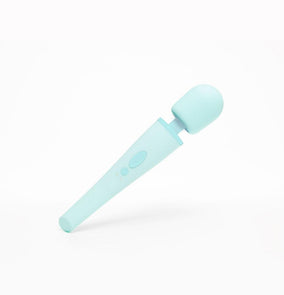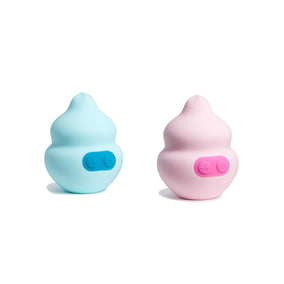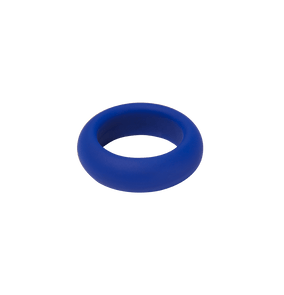

TLDR: We built a bro-tastic burner brand to examine how discriminatory policies affect a brand's ability to advertise on social platforms. The result? Thunderthrust, a comically hypermasculine fake brand with the same products as Unbound, sailed through the ad approval process. So weird, right?
Thunderthrust coverage in the news:
Mashable, Beauty Independent
The Double Standard in Paid Ads
The real team behind Thunderthrust
We're Unbound- a sexual wellness company. Since 2012, our small but mighty team has been dedicated to demystifying an often overwhelming and intimidating shopping experience by providing educational content and well designed, affordable, body safe products.
Everything about that rules except, we face massive barriers to advertise on social platforms like Facebook or Instagram.
The issue at hand
Most advertising policies only allow products and services when they fall under the 'family planning' category.
Unfortunately, in reality, this means that any products that aid or improve the sexual experience, without facilitating pregnancy, are banned categorically even with the precise audience targeting that exists on the platforms.
This is where it gets infuriating...
Conveniently, 'family planning' for cis men is inclusive of erections and ejaculation so ads for ED meds get the green light.
These ads promise long lasting, rock hard erections that are sure to satisfy. While a scantily clad woman might be featured in the ad, her pleasure is only there as a plot device to assure the intended audience that his needs will be met.
Aside from the pervasive bias, inconsistent policies make it impossible for companies that cater to women and people of underrepresented genders to reach customers.
Make it make sense
The fact that ads like the ones shown here get approved under the policy cover of "male family planning" is pathetically unconvincing. We don't disagree with the approval of the ads or the leniency they receive- we just think that everyone deserves equal access to the equivalent products and services that cis men can see on their feeds.
When these policies censor access via a biased framework, they not only validate one identity’s needs over another, but they also perpetuate stigma and shame by limiting our visibility and mere existence.
There's a double standard that exists and let's be honest, it will *always* be in favor of cis, straight men.
Change is possible though
As recently as October 2022, Meta revised their advertising policies to include, “products addressing the effects of menopause and pain relief during sex.” It’s not much, but it is a step in the right direction.
Our hope is that by increasing awareness of this double standard, we will also increase the pressure on advertising platforms to update their policies so they are not gendered, exclusionary, and discriminatory in their definition.

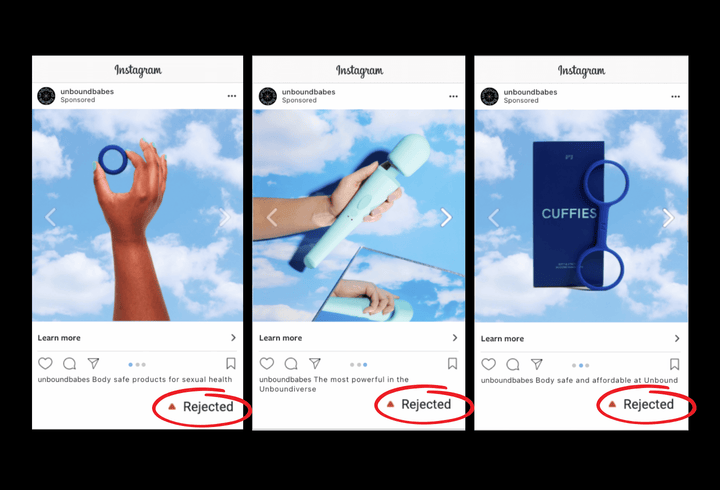
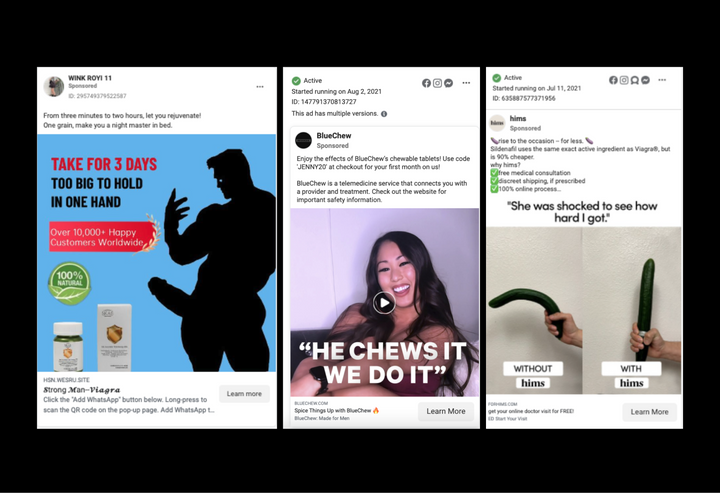
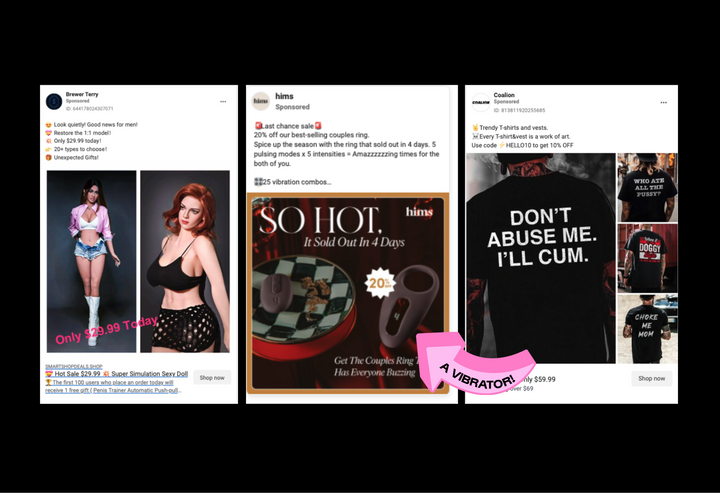
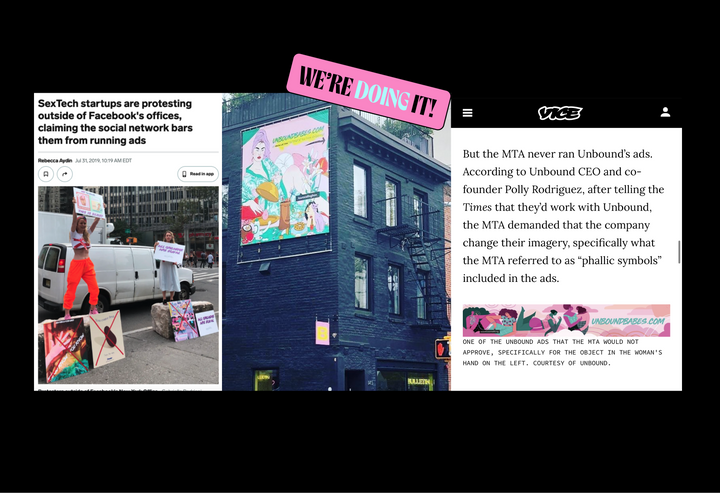
JOIN THRUSTNATION TODAY

Get the shirt
Get $10 off the tank w/ code THRUSTFUND

Follow Unbound on social
FAQ
Unbound is a sexual wellness company. Since 2012, our small but mighty team has been dedicated to making sexual health accessible. Over the last 11 (!) years, Unbound has designed over 70 different vibrators, lubricants, and accessories. Our goal has always been to demystify an often overwhelming and intimidating shopping experience by providing educational content and well designed, affordable, body safe products. We aren't here to tell you what good sex looks like, we are here to help you define it for yourself.
Almost all advertising platforms write their compliance policies through the lens of 'family planning.' Meaning, the only sexual health products approved for advertising are those that directly assist with, or help prevent, procreation.
Unfortunately, in reality, this means that any products that improve the sexual experience, without facilitating pregnancy, are banned categorically.
Defining advertising policies through the lens of 'family planning' is not only outdated and puritanical – it also creates a double standard by defining whose sexuality is appropriate, and whose is not.
Conveniently, 'family planning' for cis men is inclusive of erections and ejaculation, spanning products that support arousal, orgasm, and pleasure. However, for everyone else, the definition is far more conservative. It is not inclusive of orgasm or pleasure, because those experiences are considered unnecessary in the family planning process of pregnancy, which the policy also assumes is the only reason people have sex.
We see the immense amount of advertising for erectile dysfunction, and the focus those ads put on pleasure. Clearly, ads that highlight pleasure, arousal, and orgasm are not the issue, as we all see them daily on our social media apps, public transportation, radio, TV, podcasts, and streaming websites.
So, if the message of pleasure is not the issue, is it the object itself? Is a wand vibrator visually so offensive that it would be rejected outright because of the way it looks? Pleasure is okay to advertise for one gender identity, because that’s how babies are made, but not for anyone else in any other context? Is the object offensive or our desire to enjoy sex alongside cis men offensive?
We felt there was only one way to answer these questions: market the products as something else and find out.
There’s an honest answer and then there’s a real honest answer.
The honest answer is – we marketed these products as performance optimizing accessories and not as sexual wellness products.
The real honest answer is – the products themselves are not visually offensive. If they were, the ads would not have been approved. It’s the product’s context that determines whether it's appropriate or not. These products sail through advertising review processes when they are presented as peak performance objects for cis men.
